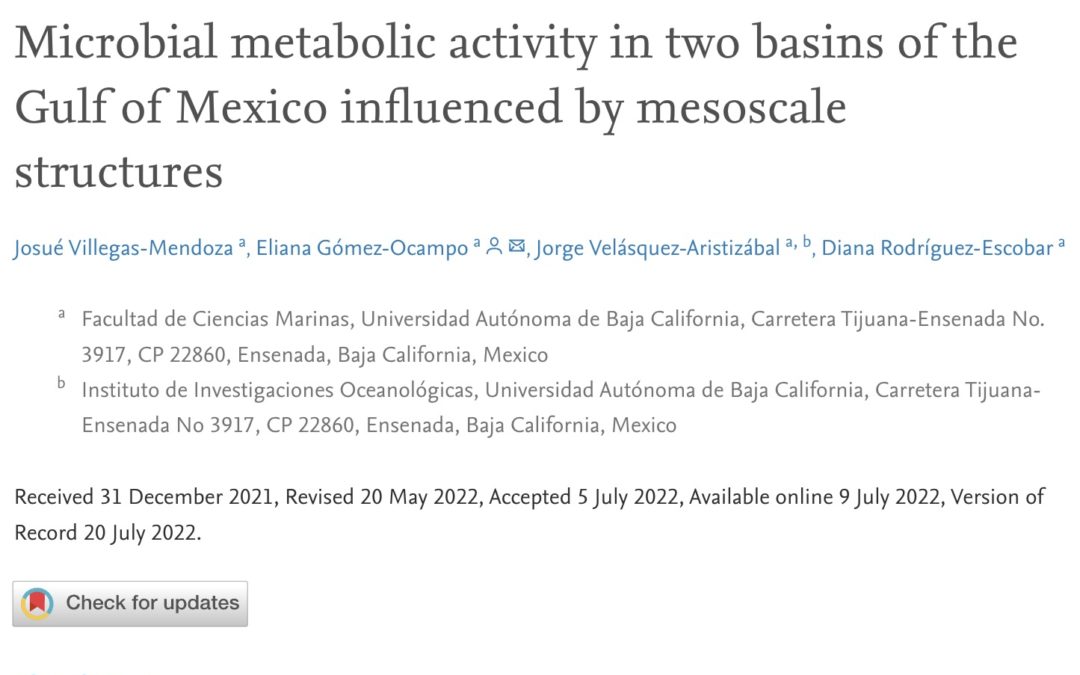Authors: Josué Villegas-Mendoza, Eliana Gómez-Ocampo, Jorge Velásquez-Aristizábal, DianaRodríguez-Escobar
https://doi.org/10.1016/j.jmarsys.2022.103781
Abstract
Information on microbial metabolic activity is essential for quantifying carbon and energy flows through marine food webs. We quantified community (Rcom) and prokaryotic (Rpro) respiration rates, bacterial production (BP), bacterial abundance (BA), and bacterial growth efficiencies (BGE) in the Perdido and Coatzacoalcos basins of the Gulf of Mexico (GOM) during summer and winter conditions in 2016. Our results showed seasonal, regional, and mesoscale eddy influences on those metabolic variables. Rpro accounted for >60% of total respiration in both regions, being three times higher in stations influenced by a cyclonic eddy (CE) in September (24.1 μM O2 d−1) than in stations affected by an anticyclonic eddy in March (7.2 μM O2 d−1) within the Coatzacoalcos basin where the eddy-trapping mechanism advected biomass-enriched waters from the Bay of Campeche. The eddy-stirring mechanism produced horizontal and vertical dipole patterns of metabolic variables increasing up to one order of magnitude Rcom and Rpro while decreasing BGE to 25-fold from the southeastern to the northwestern edges in CEs. This finding indicates that dissolved organic matter is more actively taken up to build bacterial biomass on the eastern edge of CEs in the GOM, while Rpro and Rcom increase on the western edges. Satellite integrated primary production was coupled with surface Rpro and Rcom at CEs and no eddies. BP was mainly regulated by CEs and was about 50% higher in the Coatzacoalcos basin (~0.03–0.14 μmol C L−1 d−1). BP increased in zones with high Rpro and Rcom, suggesting that Rcom is associated with heterotrophic prokaryote activity in both basins. BGE was lower than 25% within the upper 500 m during both cruises, but the highest values were quantified in the euphotic zone and during the September cruise. Metabolic variables integrated over the water column showed that 40–80% of the microbial activity occurred between the base of the euphotic zone and 150 m depth. Our findings contribute to a better understanding of the metabolic activity of the microbial communities in two regions of the GOM influenced by mesoscale eddies.
Keywords: Bacterial and community respiration rates, Bacterial production, Mesoscale eddies, Gulf of Mexico, Cyclonic eddy, Anticyclonic eddy


Comentarios recientes